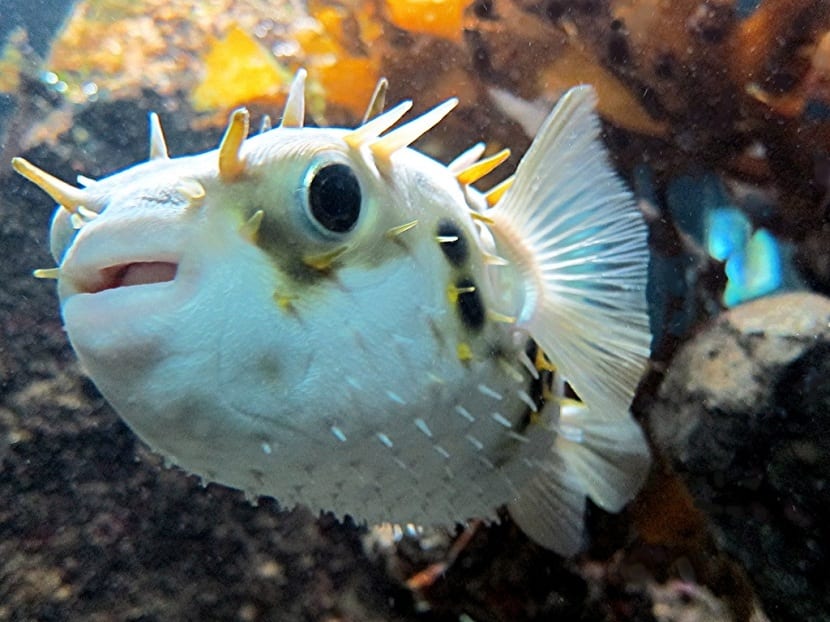
Today we come to talk about a fish with a bad character, since swells when threatened by another. It's about the puffer fish. It belongs to the Tetraodontidae family and is a feared fish while admired for its ability to swell like a ball.
Do you want to know everything about the puffer fish?
Characteristics of the puffer fish
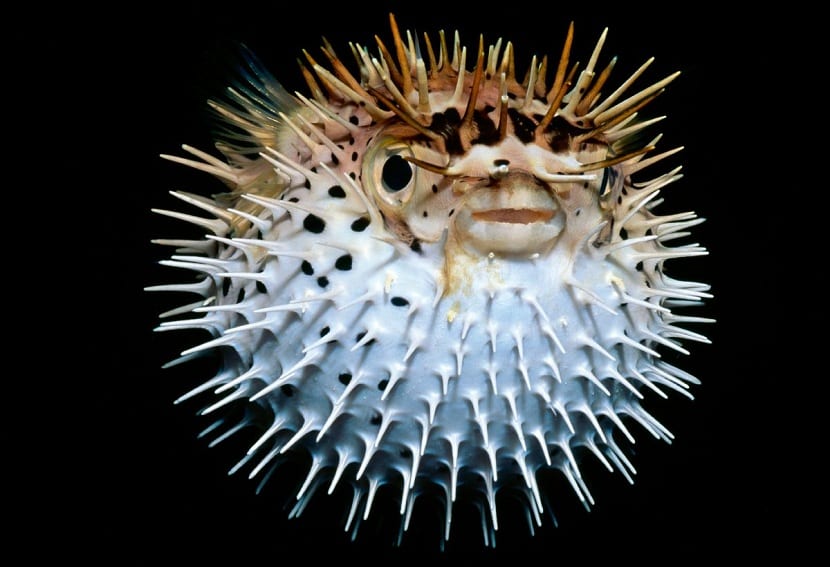
At first glance, this animal seems very harmless, but when it feels threatened or attacked, it swells like a ball and is complemented by the use of an extremely poisonous substance to defend itself.
Its body is quite mazudo and it has a large and very bulging head. It can reach up to 20 cm in length, although when kept in captivity or in a fish tank they do not exceed ten. The eyes are circular in shape, quite large and black. The mouth has reinforced lips and the upper one is shaped like a parrot's beak. As it does not have pelvic fins and the dorsal fin is very small, it is very differentiated and located behind the caudal appendix. Regarding the color, greenish yellow colors predominate on the upper part of the body while on the throat and belly it has a more silver and white color.
It has black dots all over its body that help it blend in with the environment. It is very agile and fast. Its weight also varies depending on the species from 150 grams to 10 kilos. They are fish without scales and have rough, pointed skin.
If your care is correct, you may have a life expectancy of between 8 and 10 years.
Behavior and compatibility
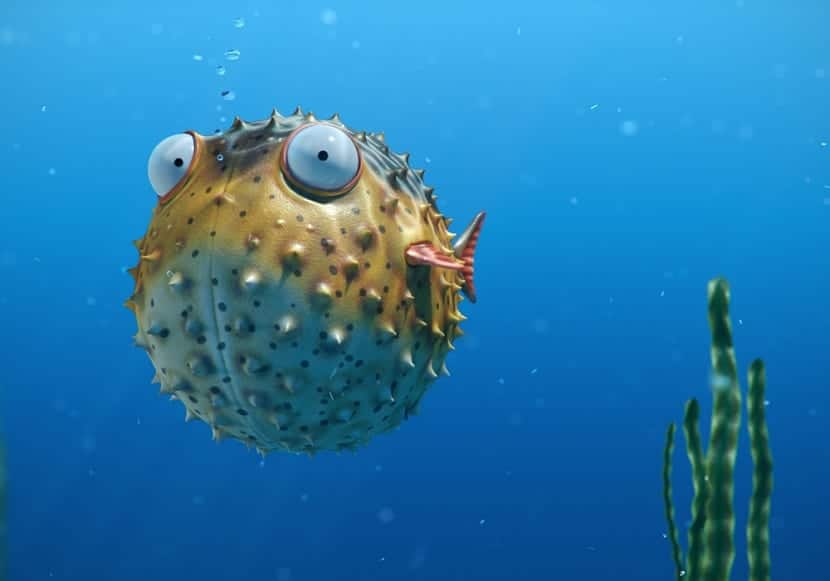
The puffer fish is not recommended to have it in a tank with other fish, since It is the fish with the worst character there is. If you place it with more fish, it is very likely that it will end up devouring them when it sees them off guard. It is capable of eating even the specimens of the same species.
On the contrary, when it feels threatened by the attack of another fish, it begins to swallow water and swell like a ball until it becomes a balloon and cannot be devoured by the mouth of the enemies. In the event that it is caught off guard and swallowed, the pufferfish's defense system contains a deadly poison called tetrodotoxin. It is so dangerous and poisonous that it could kill up to 30 people.
When the puffer fish is younger it does not have an aggressive behavior, quite the opposite. It is very peaceful and quiet. However, as it grows it is when it becomes more aggressive and territorial, especially with the other species, but also with the specimens of the same.
Biologists who study this fish believe that its ability to swell was developed due to its low swimming ability. For this reason, it has had to develop a type of defense mechanism to avoid being eaten by other fish. Therefore, when the puffer fish is attacked by another, instead of fleeing it swells. Some species of this fish also have spines on the skin that help avoid being eaten.
Puffer fish meat
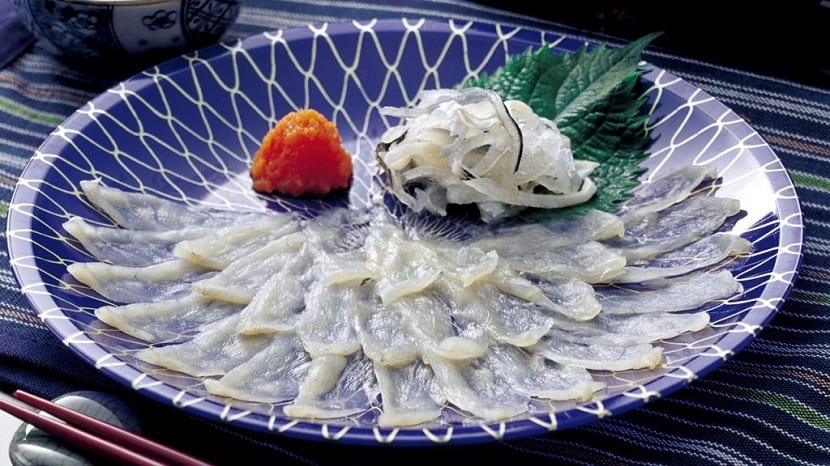
The meat of some species of puffer fish is considered a delicacy. Of course, it is necessary for the cook to know how to completely separate the poison from the edible meat. In Japan his name is fugu and it is known to be extremely expensive and can only be prepared by licensed, trained professional chefs, as a bad cut would mean the death of the customer.
No matter how good a chef is, there are failures that happen and this causes the death of several people a year.
Types and species and habitat
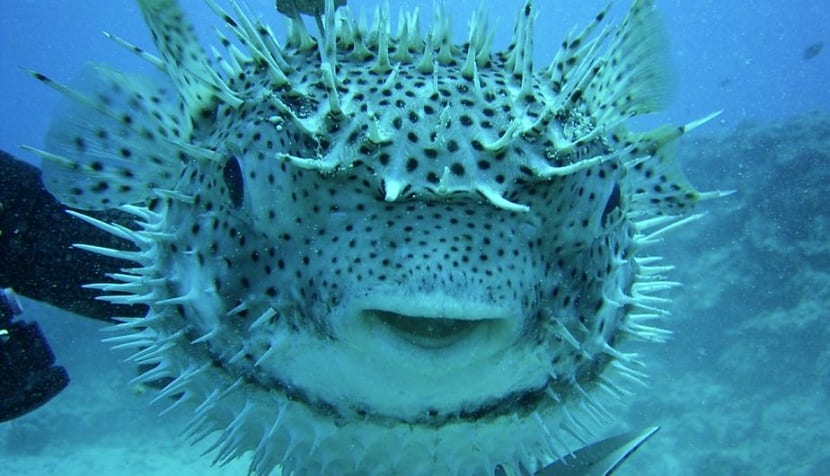
There are more than 120 species of puffer fish around the world. The vast majority of them live in tropical and subtropical ocean waters, but some live in fresh and brackish waters. Some varieties warn of their danger with marks on the body or some type of more striking color, while others have a mottled pattern that allows them to blend in with the environment and go unnoticed.
They are more solitary fish and live about 300 meters deep, mainly in coral reef areas.
Food

The diet of this fish includes mostly invertebrate animals and algae, although it is omnivorous. It feeds on prey like larvae, insects, snails and worms. Its behavior with its surroundings is to bite everything that comes its way. With its hard beak it can split shells, eat clams, mussels and shellfish.
Scientists believe that their deadly toxin is developed from bacteria in the animals they eat.
Some species, given the strong contamination in the waters, are more vulnerable due to habitat loss and overfishing. It is generally considered a non-threatened population because of its stable population number.
Care and reproduction
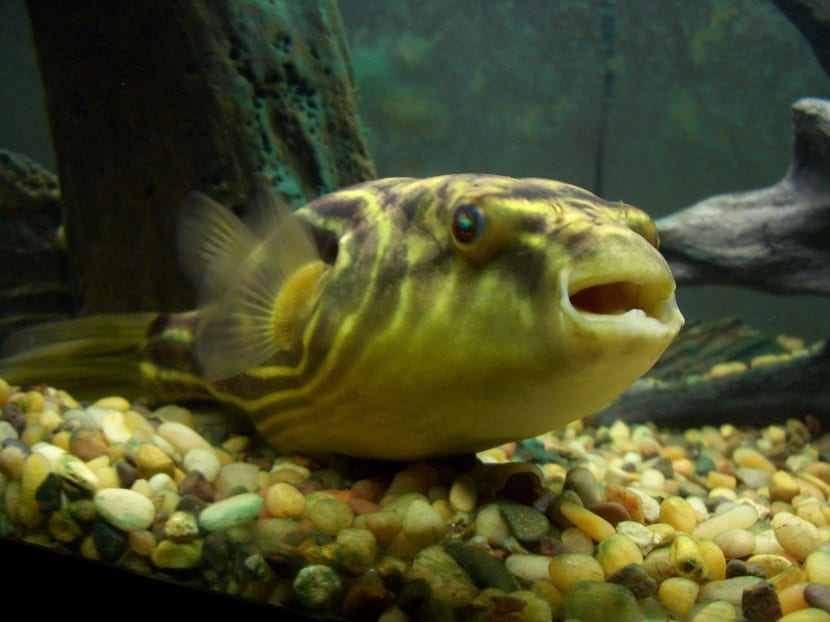
The puffer fish needs temperatures 22 to 26 degrees to simulate warm waters of tropical regions. As there is no sexual dimorphism, the male and the female are very well differentiated.
To reproduce these fish in an aquarium, it is necessary to prepare it with a thick bottom, a plate filter and well supplied with stones and rocks that they can use to create caves and hide. The aquarium must have 1,5 grams of salt for each liter of water.
Being an oviparous fish, the female lays the eggs in the marine vegetation and after a week, the eggs begin to hatch. It is then that the mother leaves and the father is the one who takes care of them until they learn to swim.
Diseases and prices
The puffer fish can be affected by any typical aquarium fish disease, although it is more vulnerable to certain parasites if they live in fresh waters.
As for prices, depending on the species, they can vary between € 7,5 and € 50.
As you can see, these fish are unique and special in their habitat, so having them in a fish tank is quite a challenge not suitable for beginners.